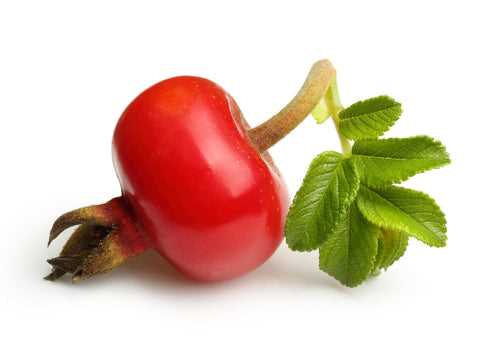- Rosehip: Definition, Benefits, Species
- Definition
- Benefits
- Species
- Rosehip Growing in the Garden
- Choosing the Right Species
- Planting and Maintenance
- Harvesting Rosehips
- Uses of Rosehips
- Conclusion
- Nutritional Properties of Rosehips
- Health Benefits of Rosehips
- 1. Rich in Vitamin C
- 2. Antioxidant Properties
- 3. Anti-Inflammatory Effects
- 4. Improved Digestive Health
- 5. Enhanced Skin Health
- 6. Potential Cancer Prevention
- 7. Weight Management
- 8. Heart Health
- 9. Boosted Immune System
- 10. Improved Eye Health
- Culinary Uses of Rosehips
- 1. Rosehip Tea
- 2. Rosehip Jam
- 3. Rosehip Syrup
- 4. Rosehip Soup
- 5. Rosehip Powder
- Different Species of Rosehips
- Rosehip Harvesting and Preparation
- Choosing the Right Time
- Harvesting Techniques
- Preparation Methods
- Question-answer:
- What are the benefits of growing rosehips in the garden?
- What are the different species of rosehip?
- How do I grow rosehips in my garden?
- Can I use rosehips to make herbal tea?
- What are the properties of rosehips?
- Can I use rosehips to make skincare products?
- Are there any precautions or side effects to be aware of when using rosehips?
- Video: How to grow Rosehips – From Planting to Harvest and Uses

Rosehip, also known as wild rose, is a fruit that grows on various species of rose plants. It is a small, round, and vibrant red or orange fruit that forms after the rose petals fall off. Rosehips are commonly found in gardens and are considered a popular addition to floral arrangements due to their attractive appearance and unique shape.
Aside from their decorative value, rosehips have been utilized for their medicinal properties for centuries. They are known for their high levels of Vitamin C, making them a popular supplement for boosting the immune system. Additionally, rosehips contain antioxidants and anti-inflammatory compounds that have been linked to various health benefits, including improved digestion and reduced joint pain.
There are several species of rose plants that produce rosehips, each with its own distinct characteristics. The dog rose (Rosa canina) is one of the most common species and is known for its abundant red-orange fruits. The Japanese rose (Rosa rugosa) is another popular species that produces larger and darker rosehips. Other species, such as the beach rose (Rosa rugosa) and the sweetbriar rose (Rosa rubiginosa), also produce rosehips that differ in size, color, and taste.
With their vibrant colors, nutritional richness, and wide-ranging health benefits, rosehips continue to be a cherished addition to gardens around the world. Whether used in culinary creations, beauty products, or traditional medicine, these small fruits offer a multitude of possibilities for both physical and aesthetic well-being.
Rosehip: Definition, Benefits, Species
Definition
Rosehip is the fruit that develops from the blossoms of the wild rose plant. It is typically red or orange in color and is known for its high vitamin C content. Rosehip is often used in herbal medicine and is also popular for its culinary uses.
Benefits
- Rich in vitamin C: Rosehip is a natural source of vitamin C, which is essential for collagen production, immune system support, and overall skin health.
- Antioxidant effects: Rosehip contains antioxidants that help protect the body’s cells from damage caused by free radicals.
- Anti-inflammatory properties: The anti-inflammatory compounds found in rosehip may help reduce inflammation in the body and alleviate symptoms of arthritis and other inflammatory conditions.
- Improved digestion: Rosehip is believed to support healthy digestion, relieve constipation, and promote the growth of beneficial gut bacteria.
- Boosted immune system: The vitamin C and antioxidants in rosehip can help strengthen the immune system and enhance overall health.
Species
There are several species of wild roses that produce rosehips. Some common species include:
| Species | Description |
|---|---|
| Rosa canina | Also known as dog rose, it is the most common species used for rosehip production. |
| Rosa rugosa | This species is known for its large and sweet rosehips. |
| Rosa rubiginosa | Also called sweet briar, this species is often used in herbal medicine for its medicinal properties. |
Each species of rosehip has its own unique characteristics and flavors, making them suitable for different culinary and medicinal purposes.
Rosehip Growing in the Garden
Rosehip is a fruit that comes from various species of wild roses. It is commonly used in gardens as an ornamental plant due to its beautiful flowers and attractive fruits. Growing rosehips in your garden can be a rewarding experience, as it not only adds aesthetic value to your landscape but also provides you with a rich source of vitamin C and antioxidants.
Choosing the Right Species
Before you start growing rosehips in your garden, it is important to choose the right species that will thrive in your climate and soil conditions. Some popular rosehip species for garden cultivation include:
- Rosa canina – Also known as dog rose, this species is widely cultivated for its attractive red fruits.
- Rosa rugosa – This species is known for its large, showy flowers and flavorful fruits. It is particularly tolerant of sandy and salty soils.
- Rosa moyesii – Commonly known as Moyes rose, this species produces large, single flowers and bright red hips.
Planting and Maintenance
When planting rosehips in your garden, choose a sunny location with well-drained soil. Dig a hole that is wide and deep enough to accommodate the root system of the plant. Place the rosehip plant in the hole and cover the roots with soil, gently firming it around the base of the plant.
Water the plant thoroughly after planting and keep the soil moist but not waterlogged. Mulching around the base of the plant can help retain moisture and control weeds. Prune the plant in early spring to remove dead or damaged branches and promote healthy growth.
Harvesting Rosehips
Rosehips are usually ready for harvest in late summer or early fall, depending on the species. The fruits should be firm and brightly colored. To harvest the rosehips, use a pair of clean, sharp scissors or pruning shears to cut the fruits from the plant. Be careful not to damage the plant while harvesting.
Uses of Rosehips
Rosehips have numerous culinary and medicinal uses. They can be used to make jams, jellies, syrups, and herbal teas. Rosehip oil, extracted from the seeds of the fruit, is often used in skincare products due to its moisturizing and anti-aging properties. The high vitamin C content of rosehips makes them a popular natural remedy for boosting the immune system and fighting colds and flu.
Conclusion
Growing rosehips in your garden can be a delightful and rewarding experience. With the right species selection, proper planting and maintenance, you can enjoy beautiful flowers and harvest nutritious fruits. Whether used in culinary creations or for their health benefits, rosehips are a versatile and valuable addition to any garden.
Nutritional Properties of Rosehips
Rosehips are not only beautiful and fragrant, but they are also packed with various nutrients that provide numerous health benefits. Here are some of the key nutritional properties of rosehips:
- Vitamin C: Rosehips are one of the richest plant sources of vitamin C. They contain about 50% more vitamin C than oranges. Vitamin C is an important antioxidant that helps protect the body against various diseases, strengthens the immune system, and promotes collagen production for healthy skin.
- Vitamin A: Rosehips are also a good source of vitamin A. Vitamin A is essential for good vision, healthy skin, and a strong immune system. It also promotes the growth and development of cells and tissues in the body.
- Vitamin E: Rosehips contain vitamin E, another powerful antioxidant that protects the body against damage caused by free radicals. Vitamin E also helps strengthen the immune system and promote healthy skin.
- Calcium: Rosehips contain calcium, which is necessary for healthy bones and teeth. Calcium also plays a role in muscle contraction, blood clotting, and nerve function.
- Iron: Rosehips are a good source of iron, an essential mineral that helps carry oxygen to the cells and supports the production of red blood cells. Iron is important for preventing iron deficiency anemia.
- Antioxidants: Rosehips are rich in antioxidants, including flavonoids and polyphenols. These antioxidants help protect the body against oxidative stress, which can lead to chronic diseases such as heart disease and cancer.
- Dietary fiber: Rosehips are high in dietary fiber, which aids in digestion and helps maintain a healthy digestive system. Fiber also helps regulate blood sugar levels and promotes a feeling of fullness, which can aid in weight management.
In addition to these nutrients, rosehips also contain other beneficial compounds such as essential fatty acids, carotenoids, and bioactive compounds that contribute to their overall health benefits.
Whether consumed fresh, dried, or in the form of tea or supplements, incorporating rosehips into your diet can provide a natural boost of essential nutrients and antioxidants.
Health Benefits of Rosehips
1. Rich in Vitamin C
Rosehips are a great natural source of Vitamin C, also known as ascorbic acid. Just one tablespoon of dried rosehips can provide more than the recommended daily intake of Vitamin C for adults. Vitamin C is an essential nutrient that helps boost the immune system, promote collagen production, and protect the body against oxidative stress.
2. Antioxidant Properties
Rosehips contain high levels of antioxidants, which help protect the body against damage from harmful free radicals. These antioxidants, such as flavonoids and polyphenols, can help reduce inflammation, prevent chronic diseases, and slow down the aging process.
3. Anti-Inflammatory Effects
Studies have shown that rosehips may have anti-inflammatory effects, helping to reduce inflammation in the body. This can be beneficial for individuals with conditions such as arthritis, osteoarthritis, and rheumatoid arthritis, as well as inflammatory bowel disease.
4. Improved Digestive Health


Consuming rosehips can have a positive impact on digestive health. The high fiber content of rosehips can help regulate bowel movements, prevent constipation, and promote a healthy gut microbiota. Additionally, rosehips have been found to have a protective effect on the stomach lining, potentially reducing the risk of gastric ulcers.
5. Enhanced Skin Health


Rosehips have been used for centuries in skincare due to their potential benefits for the skin. The high Vitamin C content in rosehips can help support collagen production, leading to firmer, smoother skin. Rosehips are also believed to have skin-lightening properties and can help reduce the appearance of scars and hyperpigmentation.
6. Potential Cancer Prevention
Some studies have suggested that the antioxidants found in rosehips may have cancer-preventive properties. These antioxidants can help protect the body’s cells from damage that may lead to the development of cancer. However, more research is needed to fully understand the extent of these benefits.
7. Weight Management
The fiber content of rosehips can contribute to a feeling of fullness, which may aid in weight management by reducing overeating. Additionally, the antioxidants in rosehips can help support a healthy metabolism and promote fat burning.
8. Heart Health
Early research indicates that rosehips may have beneficial effects on heart health. The antioxidants in rosehips can help reduce the risk of heart disease by preventing the oxidation of LDL cholesterol, promoting healthy blood vessel function, and decreasing inflammation.
9. Boosted Immune System
Thanks to their high Vitamin C content, rosehips can help strengthen the immune system. Vitamin C is known to enhance the production of white blood cells, which are essential for fighting off infections and diseases.
10. Improved Eye Health
Rosehips contain important nutrients such as Vitamin A and lutein, which are beneficial for maintaining healthy eyes. Vitamin A plays a role in good vision, while lutein helps protect the eyes from conditions such as macular degeneration and cataracts.
Overall, incorporating rosehips into your diet can provide a range of health benefits. Whether consumed as a supplement, tea, or added to various dishes, rosehips can contribute to improved overall well-being.
Culinary Uses of Rosehips
Rosehips, the fruit of the rose plant, are not only beautiful but also have a wide range of culinary uses. Here are some popular ways to incorporate rosehips into your cooking:
1. Rosehip Tea
One of the most common uses of rosehips is to make tea. This flavorful and aromatic tea is rich in vitamin C and antioxidants. To make rosehip tea, simply steep dried rosehips in hot water for about 10 minutes. You can also add other herbs or spices like mint or cinnamon to enhance the flavor.
2. Rosehip Jam
Rosehip jam is a delicious and nutritious spread that can be enjoyed on toast, scones, or pastries. To make rosehip jam, cook the rosehips with sugar and water until they soften and release their natural pectin. This will result in a thick and flavorful jam with a vibrant red color.
3. Rosehip Syrup


Rosehip syrup is a versatile sweetener that can be used in various recipes. It can be drizzled over pancakes, waffles, or desserts, or mixed into yogurt and smoothies. To make rosehip syrup, simmer the rosehips with sugar and water until they break down and release their juices. Strain the mixture and bottle the syrup for later use.
4. Rosehip Soup
In some European countries, rosehips are used to make a delicious and nutritious soup. To prepare rosehip soup, cook the rosehips with water, sugar, and other ingredients like apples or orange zest. Once the rosehips are soft, strain the soup and serve it hot or chilled. It is often enjoyed as a refreshing summer treat.
5. Rosehip Powder


Another way to use rosehips is by making rosehip powder. Simply grind dried rosehips into a fine powder using a spice grinder or mortar and pestle. The resulting powder can be used as a natural food coloring or added to smoothies, baked goods, and desserts for a tangy and nutritious boost.
These are just a few examples of how you can use rosehips in your culinary creations. With their vibrant color and tangy flavor, rosehips can add a unique twist to a wide range of dishes. So why not give them a try and explore the many possibilities they offer in the kitchen?
Different Species of Rosehips
Rosehips come from various species of roses, each with its own unique characteristics and properties. Some of the most common species of rosehips include:
- Rosa canina: Also known as dog rose, this species is native to Europe and Asia. It produces large, bright red rosehips that are rich in vitamin C.
- Rosa rubiginosa: Commonly known as sweet briar or eglantine, this species is native to Europe and western Asia. Its rosehips are smaller and orange-red in color, and they are known for their high content of essential fatty acids.
- Rosa rugosa: Originating from eastern Asia, this species is often referred to as the beach rose or Japanese rose. Its rosehips are large and round, varying in color from red to orange. They are particularly rich in vitamin C and have a sweet taste.
- Rosa moyesii: Native to western China, this species is commonly known as Moyes rose. Its rosehips are bright red and elongated, resembling small tomatoes. They are known for their high levels of antioxidants.
- Rosa canina: Also known as dog rose, this species is native to Europe and Asia. It produces large, bright red rosehips that are rich in vitamin C.
- Rosa pendulina: Also known as Alpine rose, this species is native to the mountainous regions of Europe. Its rosehips are deep red and have a unique drooping appearance. They are often used in traditional herbal preparations.
These are just a few examples of the many different species of rosehips available. Each species has its own distinct flavor and nutritional profile, making them a versatile ingredient in various culinary and medicinal applications.
Rosehip Harvesting and Preparation
Harvesting rosehips is an important step in utilizing this versatile plant. The rosehip bushes produce abundant fruits which are rich in nutrients and can be used in a variety of ways.
Choosing the Right Time
The best time to harvest rosehips is typically in late summer or early autumn, when the fruits are fully ripened. The fruits should be firm but slightly soft to the touch, indicating that they are ready for picking. It is important to harvest the rosehips before the first frost, as freezing temperatures can damage the fruits.
Harvesting Techniques
To harvest rosehips, simply snap or cut the fruits from the bushes using a pair of garden shears or sharp scissors. It is advisable to wear gloves while harvesting to protect your hands from thorns and to avoid any skin irritation that may be caused by the fine hairs on the fruits. Be cautious not to damage the branches or the buds while picking the rosehips.
Preparation Methods
Once harvested, the rosehips need to be prepared before using them in various applications. The process involves cleaning, removing the seeds, and drying the fruits. Here is a simple step-by-step guide to prepare rosehips:
- Gently wash the rosehips with water to remove any dirt or debris.
- Remove the stems and calyxes from the fruits.
- Cut the rosehips in half and use a small spoon to scoop out the seeds and any remaining pith.
- Spread the cleaned rosehips on a baking tray and let them air dry for a few hours.
- Alternatively, you can dry the rosehips in a food dehydrator or at a low temperature in the oven.
- Store the dried rosehips in an airtight container in a cool, dry place until ready to use.
Once prepared, the dried rosehips can be used to make teas, jams, jellies, syrups, or added to various recipes to enhance their flavor and nutritional value.
Question-answer:
What are the benefits of growing rosehips in the garden?
Growing rosehips in the garden can provide several benefits. Firstly, they are aesthetically pleasing and can enhance the beauty of your garden with their vibrant colors. Secondly, rosehips are rich in vitamin C, antioxidants, and other beneficial compounds, making them a great addition to your diet. Lastly, rosehips can attract birds and wildlife to your garden, enhancing its biodiversity.
What are the different species of rosehip?
There are several species of rosehip, including Rosa canina, Rosa rugosa, Rosa moschata, Rosa rubiginosa, and Rosa eglanteria. Each species has its own unique characteristics and properties, but they all share common traits such as being rich in vitamin C and antioxidants.
How do I grow rosehips in my garden?
To grow rosehips in your garden, you will need to start by planting rose bushes. Choose a sunny location with well-draining soil. Dig a hole that is slightly larger than the root ball of the rose bush, and gently place the root ball into the hole. Fill the hole with soil, making sure that the rose bush is planted at the same depth as it was in the container. Water the rose bush thoroughly, and continue to water it regularly, especially during dry spells. Prune the rose bush in early spring to encourage new growth and flower production. With proper care, your rose bushes will produce abundant and beautiful rosehips.
Can I use rosehips to make herbal tea?
Yes, rosehips can be used to make herbal tea. Simply gather the ripe rosehips, remove the stems and blossom ends, and cut them in half to expose the seeds. Place the rosehips in a teapot or cup, and pour boiling water over them. Allow the tea to steep for 10-15 minutes, then strain the liquid and enjoy. You can also add other herbs or flavors to enhance the taste of the tea.
What are the properties of rosehips?
Rosehips are known for their high vitamin C content, making them beneficial for boosting the immune system and promoting overall health. They also contain antioxidants, which can help protect the body against damage from harmful free radicals. Additionally, rosehips have anti-inflammatory properties and can be used to soothe inflammation and relieve pain. They are also rich in vitamins A, E, and K, as well as minerals like calcium and iron.
Can I use rosehips to make skincare products?
Yes, rosehips can be used to make skincare products. The oil extracted from rosehips is often used in cosmetics and skincare products due to its moisturizing and nourishing properties. It can help improve the appearance of scars, wrinkles, and stretch marks, as well as promote skin regeneration and firmness. You can make your own rosehip oil by infusing dried rosehips in a carrier oil such as jojoba oil or sweet almond oil.
Are there any precautions or side effects to be aware of when using rosehips?
While rosehips are generally safe for consumption and topical use, there are a few precautions to be aware of. Some people may be allergic to rosehips and may experience allergic reactions such as itching, redness, or swelling. If you have a known allergy to roses or related plants, it is best to avoid using rosehips. Additionally, if you are pregnant or breastfeeding, you should consult with a healthcare professional before consuming or using rosehip products.







